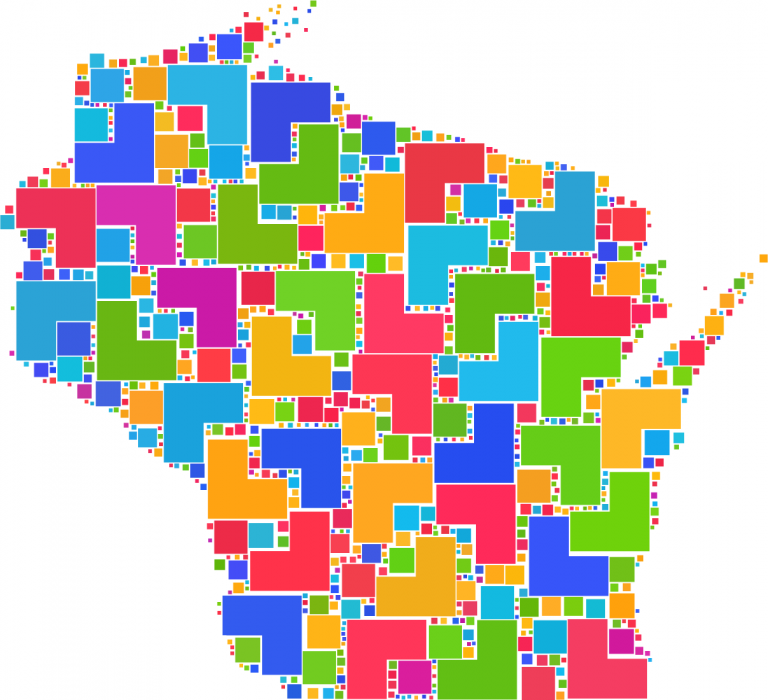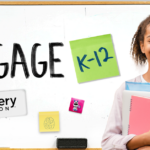By Sara Gold
For educators, the pandemic has highlighted a few key issues that they’ll need to face head-on in the coming years: social-emotional learning, diversity and equity. The Center for Public Education defines equity in K-12 education as “when all students receive the resources they need so they graduate prepared for success after high school.”
But meeting these needs can be complicated, with no one-size-fits-all approach. And though literacy is just one piece of a complex puzzle, providing equitable access to reading materials is crucial.
In Wisconsin, several schools and stakeholders have come up with a unique strategy to solve this problem: the Wisconsin Schools Digital Library Consortium (WSDLC), funded through district use of their state allocation and governed by elected members. Leveraging a three-pronged approach that includes a shared interest, a shared collection and a shared vision, WSDLC is ensuring that more students than ever have access to reading materials.
1. Shared Interest
Literacy is the shared interest that unites everyone involved in the consortium, no matter their hometown, race, ethnicity, religion or culture. Literacy is the single most important goal the WSDLC can achieve. According to Literacy Worldwide, literacy reduces poverty and mortality rates, improves economic factors and results in more community involvement and better personal well-being. Literacy can also teach students about the world in which they live through books. And one of the best ways to improve students’ literacy is access to quality reading materials.
While a consortium previously existed for public libraries in Wisconsin, it took years to develop the formula for schools. The process to establish WSDLC began in 2014 and was thorough, involving input from focus groups, the Wisconsin Department of Instruction and CESAs (cooperative educational service agencies). WSDLC eventually launched in 2018 and now has 216 member districts — about half of the districts in the state.
With more members comes a large benefit: reduced pricing to join. At a cost of just $1.55 per student, districts can leverage a portion of their allocation of the state’s Common School Fund to pay the membership fee. It is less expensive than schools beginning their own digital collections from scratch and provides ongoing support to expanding the collection.
2. Shared Collection
A statewide shared collection requires a diverse set of titles to accommodate readers of all races, ethnicities, religions, cultures and regions. Last year, WSDLC performed a diversity audit to identify gaps in the collection with help from our digital book vendor. As a result, the consortium is adding titles in more languages and growing the areas of the collection to reflect the diversity of students utilizing the WSDLC as well as to support the needs and interests of all students.
The consortium’s collection is sorted by grades K-5, 6-8 and 9-12. At the school level, administrators can choose the collections students can access, giving individual schools the power to make decisions based on their reading needs. In addition, the WSDLC provides numerous resources and opportunities for shared training and marketing support to members.
3. Shared Vision
WSDLC is governed by a board of members elected to two-year terms. This governing board provides direction for the future of the consortium and steers collection development decisions based on a shared vision, making decisions accounting for the needs of school libraries rather than class classroom curriculum. This can include choices to purchase more popular titles, more read-alongs or more digital books that allow for simultaneous-use check-outs.
As the pandemic continues to cause staffing challenges at many schools, library and media specialists’ attentions are sometimes diverted from collection development. WSDLC has filled those gaps, and through promotion at the local level, parents have realized the benefits of a 24/7 digital book collection. Book borrowing has steadily increased since the inception of WSDLC, and as of early November, there were more than 13,300 digital books on loan for the month.
As more school districts put a focus on literacy acceleration, there are state and federal funds available to help. Collaboration among districts can help lower costs to ensure school library collections remain robust and reflect the students who are borrowing books. As stated in a 2015 article, “Libraries…lead in education innovation.”
While there is no panacea to confront the challenges the pandemic brought to school libraries, bringing educators and decision makers together is one of the best ways to move forward successfully.

Sara Gold is a librarian with WiLS, a non-profit that facilitates collaborative projects and services to save its members time and money and to advance library service. She is a project manager for the Wisconsin Schools Digital Library Consortium (WSDLC), which provides ebooks, audio, and digital magazines to more than 200 K12 public and private districts across Wisconsin. Sara is passionate about advocating for better lending terms from publishers, intellectual freedom, and digital materials that are both accessible and affordable.
The American Consortium for Equity in Education, publisher of the "Equity & Access" journal, celebrates and connects the educators, associations, community partners and industry leaders who are working to solve problems and create a more equitable environment for historically underserved pre K-12 students throughout the United States.
- American Consortium for Equity in Educationhttps://ace-ed.org/author/admin/
- American Consortium for Equity in Educationhttps://ace-ed.org/author/admin/April 23, 2025
- American Consortium for Equity in Educationhttps://ace-ed.org/author/admin/
- American Consortium for Equity in Educationhttps://ace-ed.org/author/admin/







